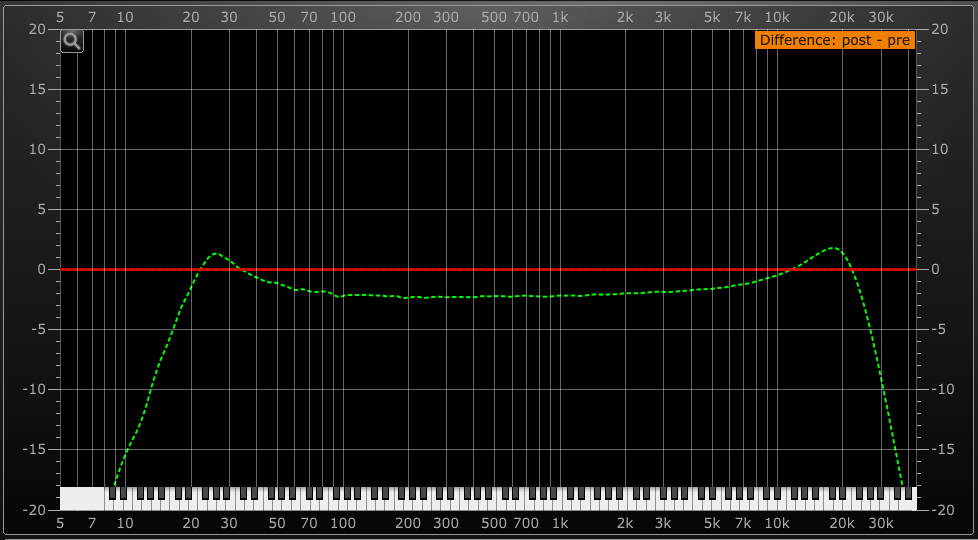Filter Circuits – Drive
We know that the new(ish) circuit models for Ableton Live’s Auto Filter effect add some tasty analog-modeled distortion, but what about their characters? Which of the circuit models adds the most aggressive distortion?
By carefully running the different circuits through various tests, i’ve determined which filter types “crunch up” the sound more than others, both by having pre-input gain push into them and also by using their built-in drive controls. Various test results were noted and combined into a score of how much each circuit distorts, nonlinearizing frequency contours and smushing over-eager resonance peaks. Those results were reduced and rounded into simple values of zero through five.
The table below ranks the circuits accordingly.
Larger number = dirtier filter. Smaller number = less impeded resonance.
| Filter Circuit Type | Drive Intensity |
| Clean | 0 |
| PRD | 1 |
| SMP | 2 |
| OSR | 3 |
| MS2 | 4 |
Filter Circuits – Frequency Contour
Usually i prefer words to images to describe things.
Here, however, i’ll let the images do the heavy lifting and let you see the frequency contours yourself.
This is what they look like as applied to full-spectrum randomly generated LCR pink noise. Initially i had made a ton of screenshots for every filter type, but it got to be way too much, so instead i’m showing just one image for each filter type, with one each of low and high cuts applied, to display how they malleate when pushed fairly hard.
Parameters are all set as such…
•lo-cut freq: min
•hi-cut freq: max
•slope: 12
•resonance: 100%
•drive: 24dB (except on the clean filter, obviously)





What to glean from these images, and from playing with the circuit models?
Some things i’ve noticed:
•PRD has the pokiest resonance of the analog models. At the same time, they have very broadly-sloped base cutoffs, leading to a curved rather than flat “smile” interior. The resonant peaks are really emphasized, and the preservation of other original frequencies is of minimal import. Even when pushed extremely hard, it mostly retains the resonant peaks. At low levels of input gain/drive and with high resonance, its self-oscillation can generate some crazy harmonics, so i wouldn’t recommend it for, say, pristine mastering work, but it might be awesome for a moog synth.
•MS2, on the other hand, really smashes down on those resonant peaks. Of course, this action depends heavily on the input material and the drive setting. When pushed extremely hard into (30+ dB or so), the resonance point is actually squished down further than the other frequencies. When pushed extremely hard it has a mostly flat, smoothly curving contour. MS2 might be a cool choice for when you want to play with resonance a lot (e.g. live, or experimentally), as it will softly curtail itself from peaking out too much.
•SMP, as described in the device info, feels like a halfway point between the PRD and the MS2. When pushed extremely hard, it has an almost flat frequency contour, with a tiny resonant high-cut peak vestige of its PRD heritage. Seems like it crushes the low end a touch more than the top at moderate drive amounts. Not sure what else to say about it. Maybe use it as a go-to when you’re not sure which circuit type to choose.
•OSR, when pushed really hard, squishes down on the low-cut resonant peak a touch more than it does the high-cut. It’s pretty dirty but retains the original material’s contour more faithfully than MS2 does. Perhaps it might be the best choice when maintaining a tasteful top end is the the most important factor, or when you want an injection of that tasty analog juice without affecting your tone too much.
•While PRD is certainly incisive, Clean is the ultimate in terms of surgical slashery, and it doesn’t at all care about the input level (unless you enable envelope reactivity y’know). Beware, though, that the steeper and deeper of filter cuts you use, the more you’ll be affecting the phase of a signal. These phase offset are generally not that off-putting, but can be a real problem in certain instances, like for example when using a filter in parallel, on an aux feed, or when filtering multiple takes of the same mic position differently—in which cases you’ll want to watch out for nulled frequencies and negative correlation.
In Conclusion
Auto Filter is a super awesome device, and i use it a lot more ever since the analog circuit models were added. They are great for mixing, to provide a low-cut, high-cut or notch cut, and scoop out unneeded frequencies while also supplying some yummy saturation. Adding a touch of envelope reactivity or LFO movement can make it more organic in a really nice way… or the various parameters can be automated and abused to the extreme for crazy experimental sound design possibilities.
It’s important to keep in mind that the drive for all four of the analog circuit models is nonlinear and affected by the input dynamics; by backing off the gain, you’ll let more resonance through and affect the frequency contour less.
Have fun with Auto Filter. Read on for the news.
NEW ADM PACK
ADM EXOTIC now available at Isotonik Studios
ADM EXOTIC is the latest in the series of ADM mega-packs, comprising instruments from the beginning of his releases up to 2018 assembled into themed sets for ultimate useability.
ADM EXOTIC features mallet-type and hard-to-categorize instruments—a somewhat odd pairing, but… that’s how it worked out.
Having them installed into one’s user library makes it super easy to browse and audition a ridiculous ton of cool instruments at a glance.
Since you’ve already tolerated enough of my rambling, instead of blathering on about it here, i’ll direct you towards brian Funk’s EXOTIC pack at Isotonik Studios.
Good day / night / perpetual limbo / whatever you dwell in!
